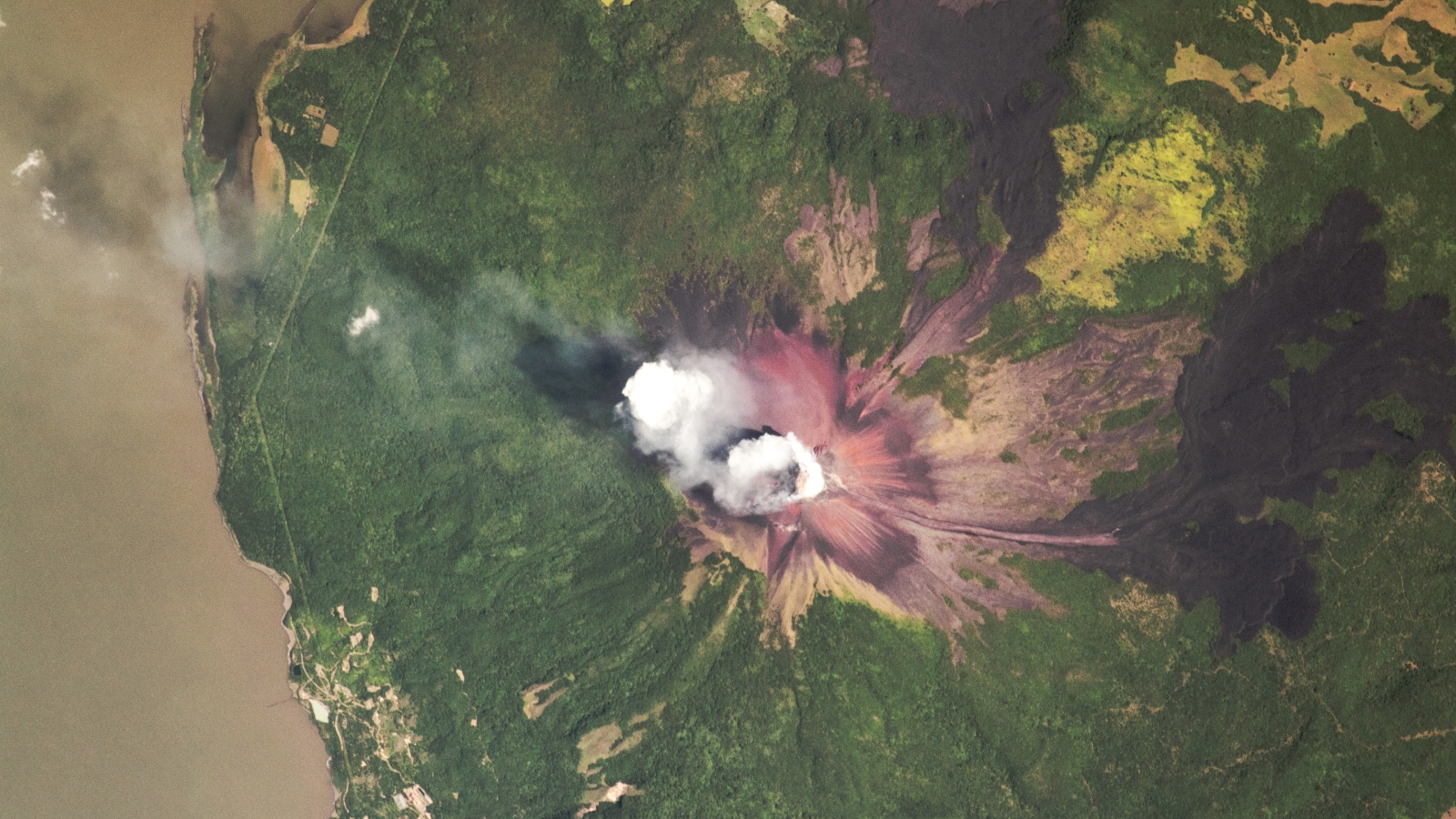
Where is it? Momotombo volcano, Nicaragua [12.42296956, -86.54492173]
What's in the photo? A large cloud of toxic gas emerging from the active volcano
Who took the photo? An unnamed astronaut on board the International Space Station
When was it taken? July 10, 2018
In this astronaut photo, an infamous Nicaraguan volcano coughs up toxic clouds of gas a few years after its first eruptions for more than a century.
Momotombo is an active stratovolcano that sits on the northern shore of Lake Managua in west Nicaragua. Stereographers who surveyed the region dubbed the volcano "the smoking terror" in 1902, according to NASA's Earth Observatory. It is relatively young for a volcano — around 4,500 years old — and its peak is 4,167 feet (1,270 meters) above sea level, according to the Smithsonian Institution's Global Volcanism Program.
Momotombo has had several major eruptions during the last 500 years, including a massive outburst in 1610 that triggered an earthquake that destroyed the nearby Spanish-controlled city of León. The residents of the city relocated and built the modern version of León, which is currently Nicaragua's second largest city, while the ruins of the old town are listed as a UNESCO world heritage site.
The volcano is currently in an eruptive phase and had major outbursts in November 2015 and February 2016. Before then, the volcano had not erupted since 1905. However, there has been no significant activity at the volcano since 2021, according to the Global Volcanism Program.
Related: 12 amazing images of Earth from space

In the photo, the volcano appears to be coughing up a cloud from its summit. This cloud likely contains a mix of water vapor and toxic gases like the foul-smelling hydrogen sulfide, which has stained the volcano's summit yellow over thousands of years. The volcano frequently spits out these clouds in the years before and after an eruption but has stopped in recent years.
In the image, two dark lava fields sit at the base of the mountain, which were left behind when molten rock flowed down lava channels in the volcano's flanks during previous eruptions, according to NASA's Earth Observatory.
Momotombo is part of the Central American Volcanic Arc, which stretches along the continent's west coast from Mexico to Panama, and is surrounded by several other volcanoes, including a smaller sister stratovolcano named Momotombito — a roughly 1,150 feet-tall (350 m) island volcano in the middle of Lake Managua that was formed at the same time as Momotombo.
The area surrounding Momotombo is full of small openings, known as fumaroles, where volcanic gas and steam rise up through Earth's surface. As a result, most of the surrounding area was turned into a geothermal plant in 1983, which generates electricity from this underground activity.







